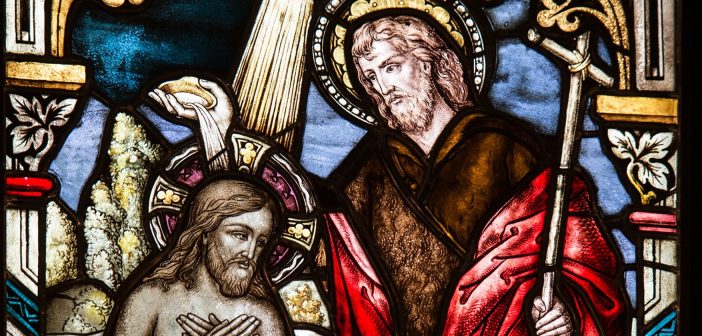Ann Michel of the Lewis Center Staff says that as the number of laypersons engaged in professional ministry grows, there is a need to articulate a robust and compelling theology of lay ministry — one that affirms the diversity and inclusiveness of God’s call.
The number of lay persons with serious involvements in ministry, both professional and volunteer, has grown dramatically in recent decades. The lay empowerment movement, the growth of multi-staffed mega-churches, and the demand for specialized programmatic ministries are part of this trend. In smaller congregations, particularly those that cannot support full-time clergy, laity assume many vital ministry functions. And in some denominations, most notably the Roman Catholic Church in America, a clergy shortage has resulted in a growing percentage of lay persons in the ecclesial workforce.
It is the laying on of hands in baptism, not ordination, that initiates a life of Christian service modeled after Jesus.
While the theology of pastoral identity is well established, the identity of lay persons in ministry is often less clearly understood. Many find themselves running afoul of deeply engrained cultural expectations — that ministry is the work of the clergy while laity are objects of ministry; that clergy attend to sacred matters while laity concern themselves with the secular world; that clergy are the experts while laity are amateurs.
This dualistic paradigm still lingers in the collective consciousness of church and society. It limits the practice of ministry at a time when the service of God requires more ministry, not less; and it can divide clergy and laity at a time when greater collaboration is needed. Given the ways the Spirit is moving the church toward a more inclusive approach to ministry, there is a need to counter the vestiges of this division by articulating a robust and compelling theology of lay ministry.
Ministry. A theology of lay ministry begins with the clear understanding that ministry is the work of all Christians. The English word ministry has its origin in the Greek work diakonia (in Latin, ministerium), which is best translated as service. It is the laying on of hands in baptism, not ordination, that initiates a life of Christian service modeled after Jesus. Martin Luther’s insistence on “the priesthood of all believers” is an outgrowth of the biblical verity that God’s people are a royal priesthood (1 Peter 2:9), and the word laity (from the Greek laos) is properly defined as “people of God.”
Call. Although call theology is prevalent in the literature and language of pastoral identity, too many lay leaders are never challenged to consider their call. Many, in fact, are led to believe that call does not apply to them, because over the centuries, our understanding of call has been distorted by the notion that it is reserved for certain categories of “holy people” — priests, monks, nuns, clergy. We have lost sight of the fact that in the Bible, particularly the New Testament, calling is a central and dynamic theme that encompasses the life of faith itself. (Guinness, The Call, 2003)
New ways of speaking about and listening for call can encourage all people who devote their energies to the church’s mission to hear the whispers of call in the events of their lives and the quiet of their hearts. (Fox, Called and Chosen, 2005) Taking great care to address the issue of clerical calling within the larger context of God’s call to all Christians prevents lay persons from feeling that God’s call does not extend to them.
Community. Late twentieth century theology has reclaimed the doctrine of the Trinity, emphasizing God as an interdependent, dynamic, community of three equal, distinct, inherently interrelated persons. This relational, non-hierarchical image of the triune God provides a compelling model for collaborative ministry — a model for how laity and clergy can minister side by side in a relationship that is mutually affirming. George Cladis’s Leading the Team-Based Church (Jossey-Bass, 1999) offers a practical guide to how the theological model of God as Trinity can inform effective leadership practices in collaborative ministry.
Christ. Paul’s poignant image of the church as the Body of Christ composed of a variety of interdependent, indispensable parts (1 Cor. 12) is another potent model of collaborative ministry. As with the Trinity, this model has the advantage of allowing for the distinctness of various ministries, while reinforcing mutuality and mutual respect. It reminds us again and again that it is Christ that is the head of the Body (Col. 1:18) — not a particular category of ecclesial servants.
The New Testament is replete with examples of the openness of the invitation to ministry that make manifest the proclamation that “God’s Spirit is poured out on all flesh.” (Acts 2:17) Efrain Agosto has observed that both Jesus and Paul “refused to work alone.” (Agosto, Servant Leadership, 2005) Their interactions with other disciples provide a compelling and tangible witness to the inclusivity of ministry.
These theological images and ideas are not new, but they require renewed emphasis as lay persons in ministry seek to articulate a clear theological identity. They are key components in the construction of a narrative that encompasses the diversity and fullness of God’s ministry. They can be used by lay servants to shape the ways we testify about how God is at work in our lives. And they can reform our use of language to counteract exclusive and exclusionary understandings of call, ministry, and church leadership. They can empower us to move with the Spirit of God that is calling so many lay persons to ministry in this day.
Related Resources
- Synergy: A Leadership Guide for Church Staff and Volunteers by Ann A. Michel
- Strengthening the Ministry of Lay Staff by Ann A. Michel






